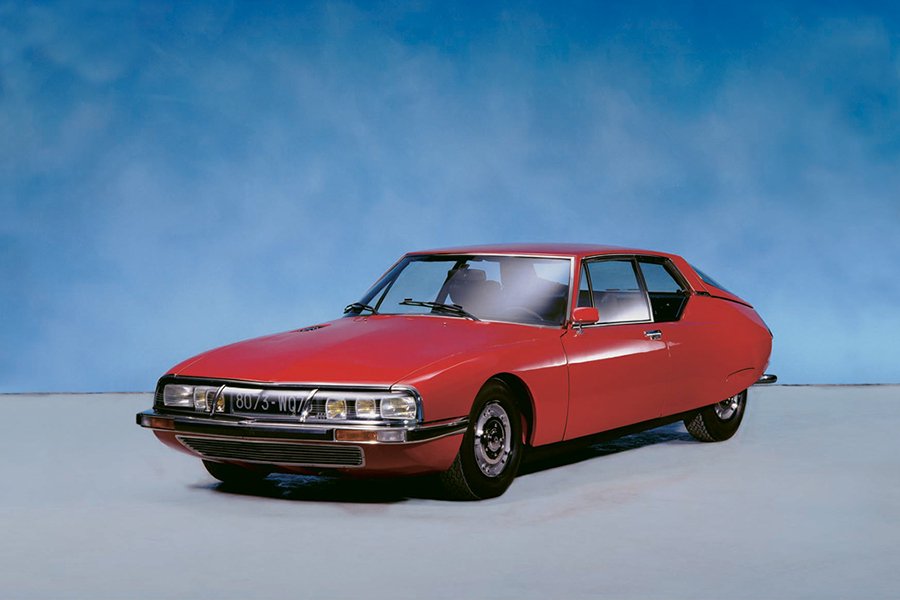techXXX
Seven Iconic, Collectible Citroëns
Citroën is known for its innovative yet quirky design and engineering. It has brought several important innovations that changed the automotive industry. Today, I briefly present seven most iconic and collectible Citroëns.
Published by Dr Jiulin Teng on 24 Sep 2024
Keywords: citroen

Citroën is known for its innovative yet quirky design and engineering. Whereas traditional French automakers such as Bugatti, Delage, Delahaye, Hispano-Suiza, Talbot-Lago, and Voisin built powerful and luxurious cars for the wealthy, Citroën always had its eyes set on the mass market. Nevertheless, it has brought several important innovations that changed the automotive industry. Today, I briefly present seven most iconic and collectible Citroëns.

Traction Avant
- 1934–1957
The 1934 Traction Avant was the world’s first mass-produced car with front-wheel drive. It also featured unibody construction and independent front suspension. This combination proved to be revolutionary and has influenced automotive designs ever since. Notably, the car’s inline-4 or -6 engine was mounted behind the gearbox, making the Traction Avant a front-mid-engine car. The car is also known for its sleek, low profile. Early models, especially pre-war examples, and rare variants like the 15 Six H with hydropneumatic suspension are especially collectible.

Type H
- 1947-1981
The Type H was a series of panel vans. It introduced many modern light vehicle designs to a commercial vehicle, including unibody construction, independent suspension, and front-wheel drive. The Type H was powered by a range of inline-4 petrol or diesel engines. Its most iconic feature is its instantly recognizable industrial design with corrugated body panels and an angular protrusion for the engine compartment. It is commonly found today as chic food trucks.

2CV
- 1948–1990
The 2CV was designed as a simple, affordable car for rural France. Like the Volkswagen Beetle, the 2CV was conceived in the 1930s but only entered production after the war. It used an easily serviced air-cooled boxer engine that originally displaced 375cc and produced just 9hp. The 2CV is an automotive legend, thanks to its minimalist design, rugged durability, and distinctive body shape. The most unique variant of the 2CV was the Sahara with a second engine in the back for four-wheel drive.

DS
- 1955–1975
The DS is perhaps the most iconic Citroën ever made. Known for its futuristic design, the DS was revolutionary as the industry’s first mass produced car with hydropneumatic self-leveling suspension as well as disc brakes in 1955. In 1967, series 3 also introduced directional headlights. Like the Traction Avant, the DS was a front-mid-engine FWD car, but it only had an inline-4 power plant. The DS is highly collectible, especially the early models with unique features like the single spoke steering wheel and semi-automatic transmission. Limited editions like the DS Décapotable (convertible) are particularly sought after. Like the Traction Avant, 2CV, and Type H Van, the DS was designed by Flaminio Bertoni and André Lefèbvre.

SM
- 1970–1975
The SM was the only grand tourer that Citroën has ever produced. Essentially a modified DS with two doors and a Maserati V6 engine, the SM was a high-performance vehicle. Its unique aerodynamic design, advanced features, and luxurious interior made it a standout, while its advanced suspension technology made it one of the best riding vehicles of its segment. Its V6 engine would later power a range of underwhelming Maseratis into the 1990s. The SM’s blend of performance and design, along with its relative rarity, makes it a prized collector’s item.

GS Birotor
- 1973–1975
The GS was a quirky, somewhat ugly small family car in production throughout the 1970s and 1980s. In 1973, Citroën introduced the GS Birotor powered by a two-rotor Wankel rotary engine, which made it considerably more powerful than the standard GS. This unique engine was paired to a semi-automatic transmission also found in the DS. Due to its untimely launch just at the start of the oil crisis as well as its poor reliability, the GS Birotor was quickly discontinued. Today, its unique engine and limited production run make it highly desirable, despite its technical challenges.

BX 4TC
- 1986
The BX was a mediocre large family car in production throughout the 1980s. In 1986, Citroën entered Group B rallying and made the all-wheel drive BX 4TC as a homologation special. It featured a unique turbocharged inline-4 engine as well as Citroën’s trademark hydropneumatic suspension. Due to its rarity and connection to the golden era of rallying, the BX 4TC is highly collectible, with values rising as examples become increasingly scarce.



